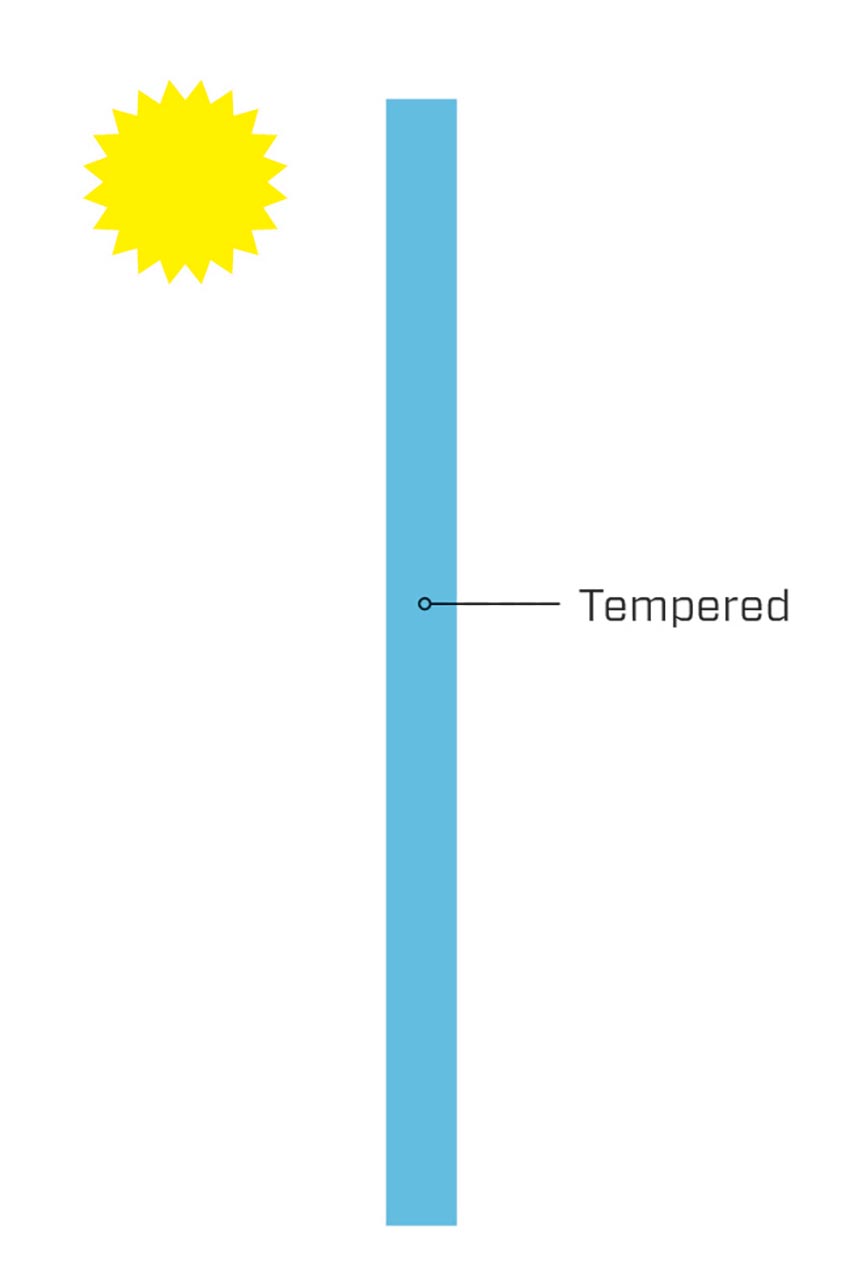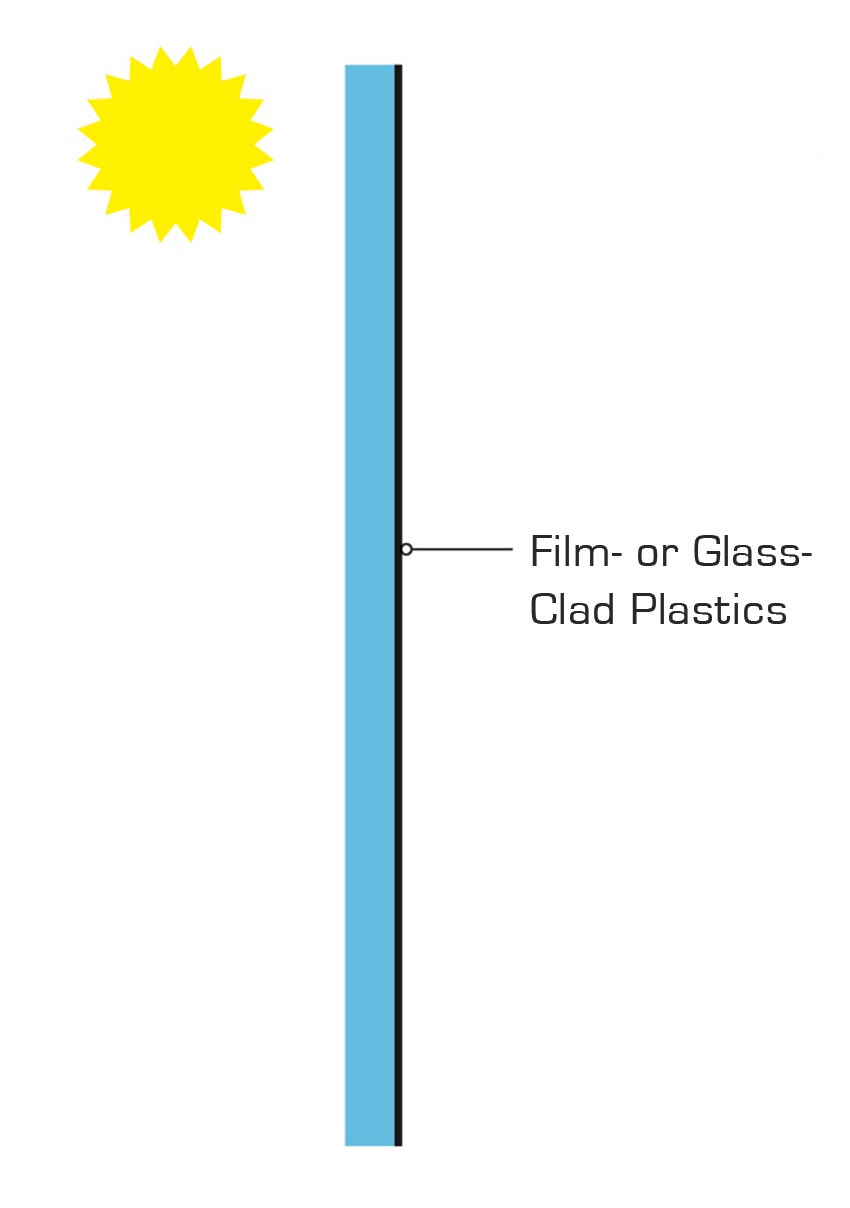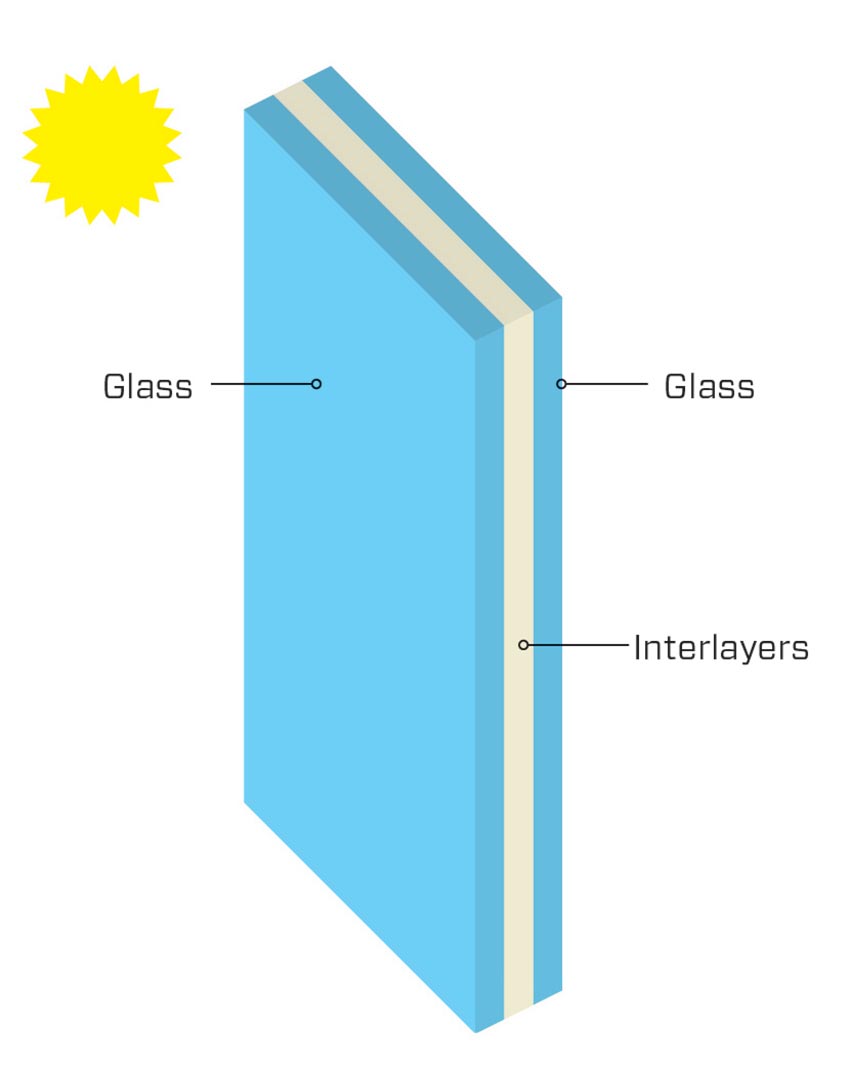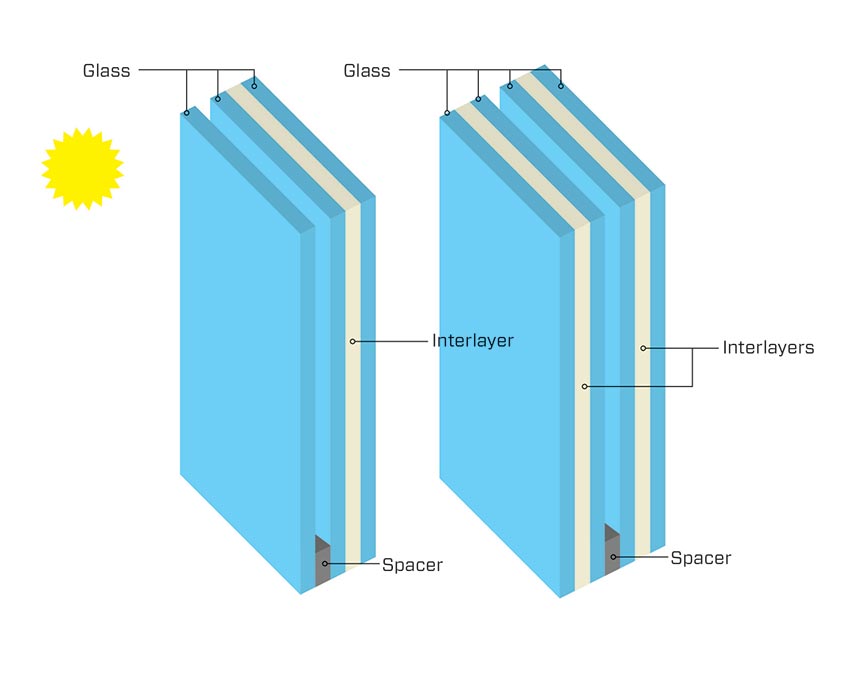Understanding How Glazing Can Impact Safety and Fire Protection
Monolithic Safety Tempered Glass
Monolithic safety tempered glass is a single glass lite but is also safety tempered. Safety tempered glass is approximately four times stronger than regular annealed glass and is called “safety glass” because, when fractured, it breaks into smaller pieces, which makes it less likely to cause serious injury. Monolithic safety tempered glass is also great for daylighting because it allows sunlight to penetrate the building. This glass is the least secure of all the options discussed in this course and is best suited for areas not prone to forced entry, such as windows on upper floors.

Image courtesy of National Glass Association
Monolithic safety tempered glass only contains one lite and is great for daylighting because it allows sunlight to penetrate into the building.
Single Lite with Film/Plastic
A single glass lite with an applied film or plastic is also considered safety glass because it is safety tempered and will therefore break into smaller pieces when fractured. A single glass lite with film or plastic will also allow for proper daylighting. The added benefit is that the extra layer of film or plastic can help slow down forced entry or blasts, making it more secure than standard single safety tempered glass lites.

Image courtesy of National Glass Association
Single-lite glass with a plastic film helps slow down forced entry or blasts, thus making it more secure than standard glass.
Laminated Glass
Laminated glass is made up of two or more lites that are permanently bonded by heat or pressure with one or more plastic interlayers to provide extra protection. This type of glass is great for areas that need added protection, such as entry doors or glass areas in banks, waiting areas, or other public spaces where safety is a concern. Laminated glass is enhanced to prevent forced entry or blasts and provides additional safety for occupants. Another safety feature is that, when broken, the glass stays contained instead of shattering. This is especially important in the event of forced entry or a blast where injuries could occur from the flying debris if the glass shatters. In addition to safety, laminated glass provides enhanced acoustics by keeping sound in areas where it belongs and out of places where it doesn’t. It also provides daylighting for areas where glass may not have been an option before.

Image courtesy of National Glass Association
This example of laminated glass is made up of two lites that are permanently bonded by heat or pressure with two plastic interlayers for added protection.
Laminated Insulating Glass Unit (IGU)
Laminated glass within an insulating glass unit (IGU) provides all the benefits previously discussed for laminated glass but has the added benefit of energy efficiency and resistance to adverse weather. Laminated IGU glass is also made up of two or more lites that are permanently bonded by heat or pressure with one or more plastic interlayers. However, laminated IGU glass provides an extra layer of protection thanks to the spacer that is placed between the two panes. Sometimes laminated IGU is two laminated pieces of glass, and other times it’s a single lite with a spacer and laminated glass on the other side. This space between the two panes provides extra thermal protection and can limit unwanted heat transfer. This type of glass can also protect against impact from wind and rain in strong storms, such as hurricanes.

Image courtesy of National Glass Association
This example of a laminated insulating glass unit (IGU) contains four layers of glass, interlayers between each pair, and a spacer between each pair for added insulating properties and improved thermal performance.









